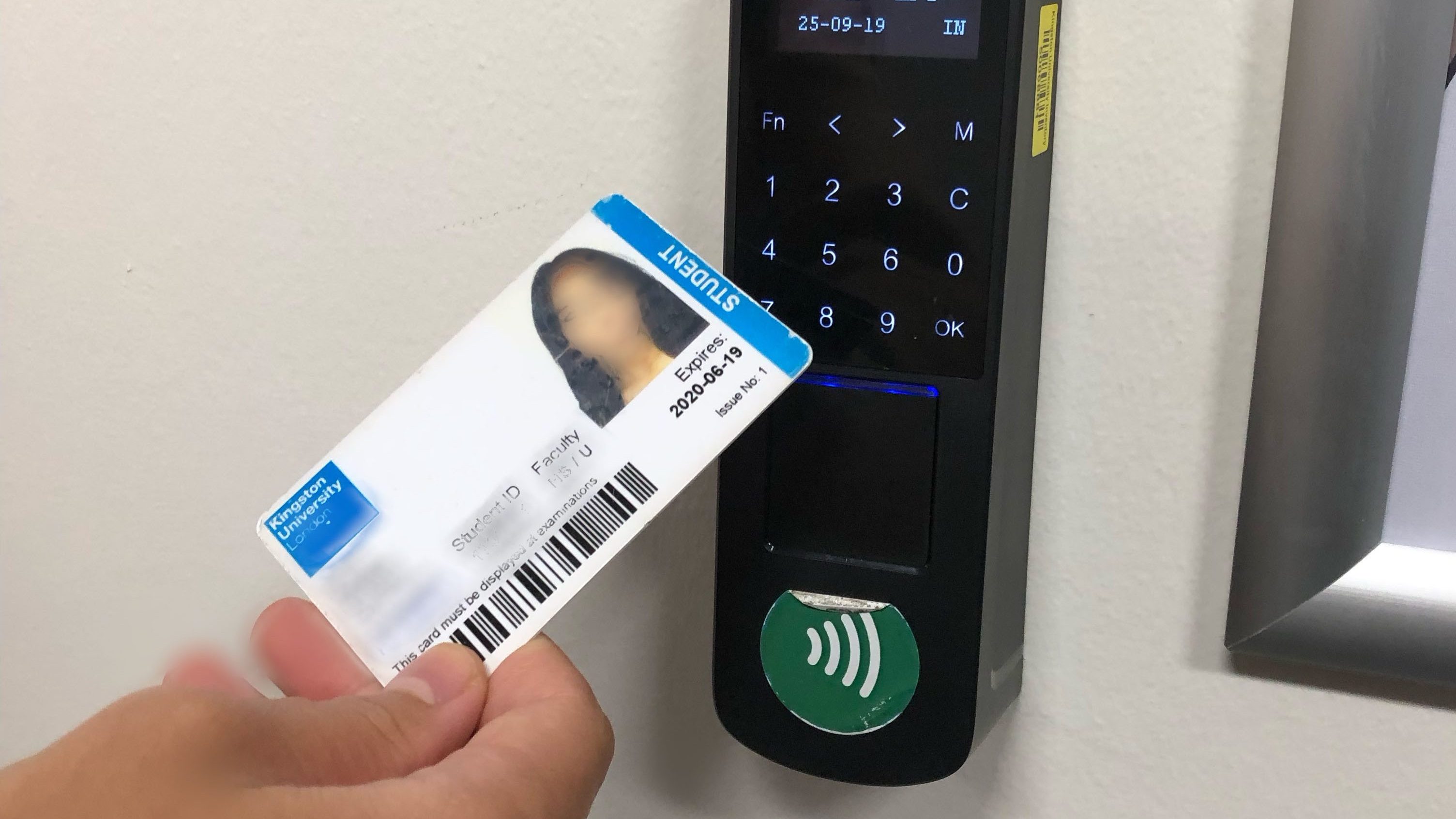Attendance at KU has not improved since the implementation of electronic check-ins last year.
The SEAts software, which allows lecturers to monitor student attendance when they scan their ID card or use the app, was intended to encourage students to be more proactive when attending class.
Second-year pharmaceuticals student Courtnie Thomas-Wilkes said there has been “hardly any difference” to attendance.
The small black devices are fixed to the wall of classrooms and lecture theatres, positioned near to the doors.
There has been some confusion over the scheme as it is only intended for students who study at Faculty of Business and Social Sciences; Health, Social Care and Education or Science, Engineering and Computing.
First-year students at Kingston School of Art are also required to check into their classes.
“Sometimes there are issues with the system, so when one of us taps in, it doesn’t register meaning our attendance can drop,” said Wilkes.
Larger classrooms do not always have multiple devices, so queues of students wanting to tap their cards to check-in can be expected at the start of a lecture.
This can be lengthened by students who decide to check in on behalf of other students using their cards which cause delays.
“Sometimes people will stand there tapping six cards in a row because other classmates or their friends will check-in for them, and it creates queues,” said Wilkes.
The SEAts mobile app allows students to also check into their lectures using their phones, after signing in with their Kingston University email and enabling Bluetooth.
When using the app to check-in, students must be near to the device which means it will only be logged if they are physically in the classroom.
A loophole to the check-in system is that “some students will give their cards to their friends or other people so they can check-in for them if they can’t come to class but do not want their attendance to drop,” said second-year forensic science student Shannon Fogarthy.
The app has a calendar feature, which shows students their exact attendance as a percentage for each day and summaries of each module.
This enables students to see exactly which classes they have been attending.
Analytical science lecturer Carl Hall said: “Student attendance is higher for practical lessons because they are assessed.”
Lecturers can use this data to find out which students are not engaging in their studies and offer them support.
A Kingston University spokesperson said: “Faculty staff work closely with the central Student Achievement team to ensure students whose attendance indicates they may have disengaged from their studies are contacted.”
More information on the KU Check-in is available on the MyKingston website.

